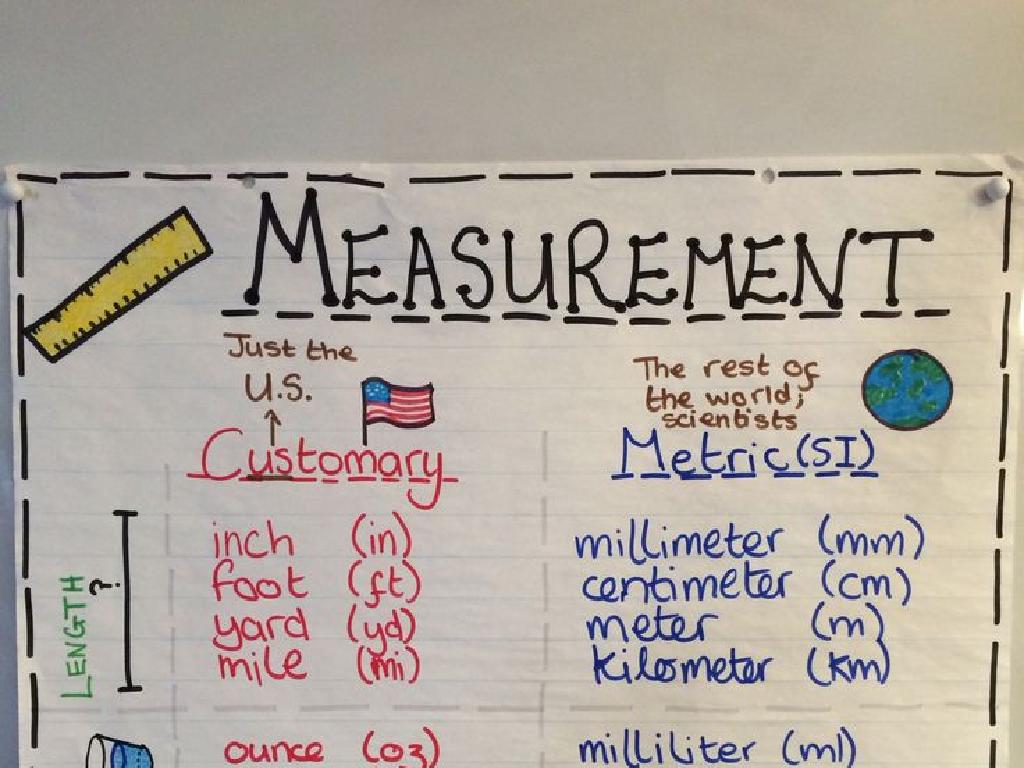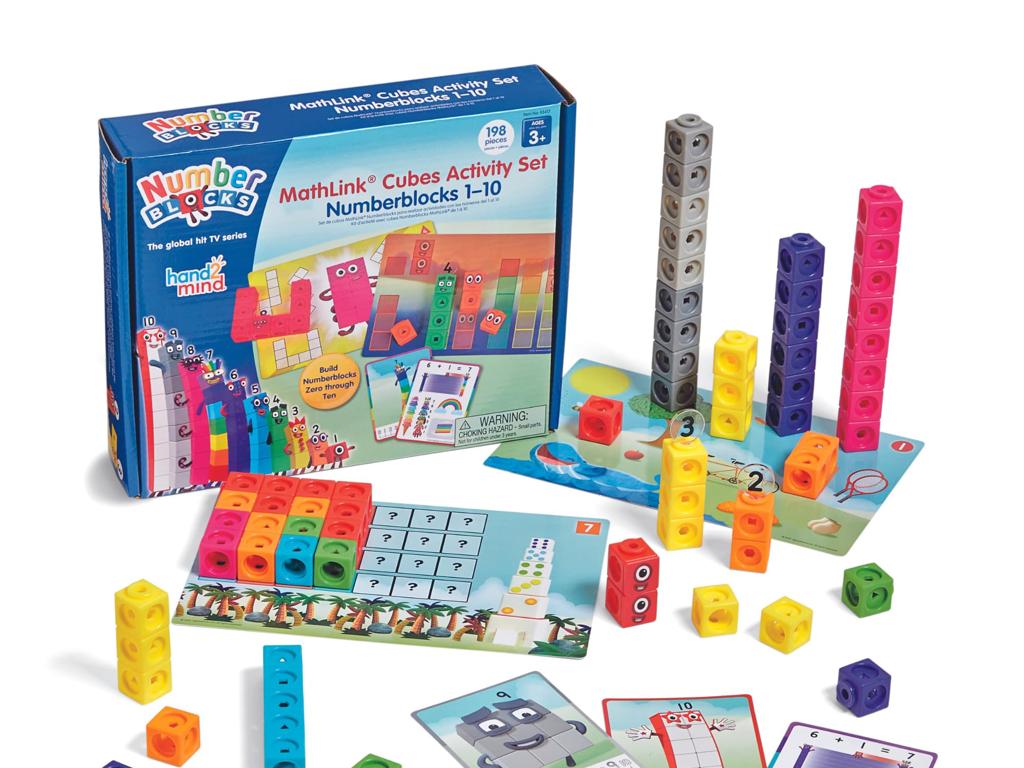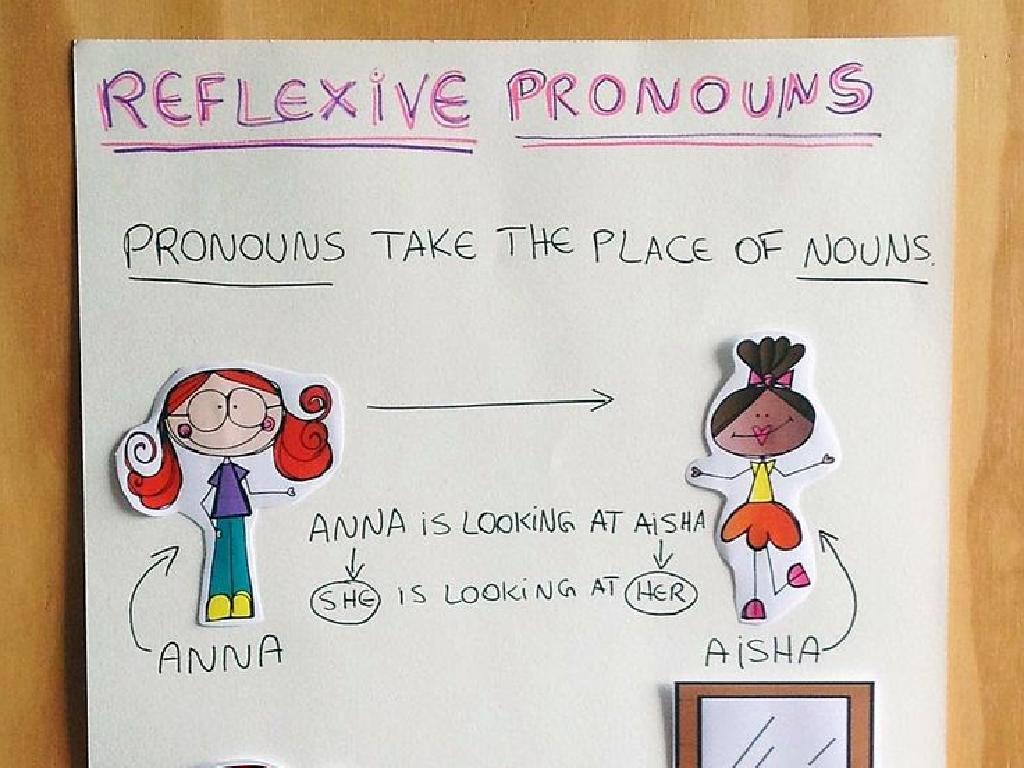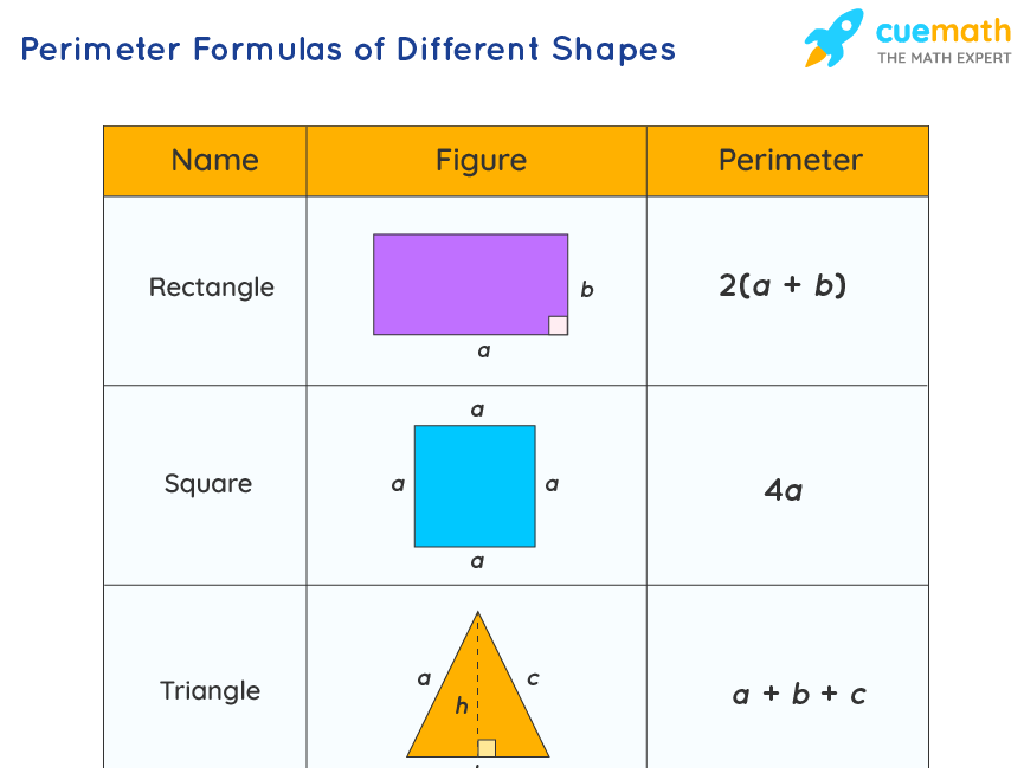Use Contractions In A Sentence
Subject: Language arts
Grade: Third grade
Topic: Contractions
Please LOG IN to download the presentation. Access is available to registered users only.
View More Content
Welcome to Contractions!
– Understanding contractions
– A contraction is a shortened form of words like ‘can not’ to ‘can’t’.
– The purpose of using contractions
– We use them to make speaking and writing quicker and more natural.
– Examples of common contractions
– ‘I am’ becomes ‘I’m’, ‘do not’ becomes ‘don’t’.
– Practice using contractions
– Let’s write sentences using ‘I’m’ and ‘don’t’.
|
This slide introduces the concept of contractions to third-grade students. Begin by explaining that contractions are a way to shorten words to make our speech and writing flow better. Emphasize that while contractions are informal, they are very common in everyday language. Provide clear examples, such as ‘I am’ becoming ‘I’m’ and ‘do not’ becoming ‘don’t’, and explain the apostrophe replaces the omitted letters. Encourage students to practice by writing sentences using the given examples, and prepare to help them understand any confusion about where and when to use contractions. This activity will help them become more familiar with contractions in a fun and interactive way.
Creating Contractions
– Making a contraction: combine words
– Use an apostrophe for missing letters
– An apostrophe replaces omitted letters
– Example: Let us becomes Let’s
– ‘Let us’ loses the ‘u’ to become ‘Let’s’
– Practice making contractions
– Try turning ‘do not’ into a contraction
|
This slide introduces the concept of contractions to third-grade students. Begin by explaining that a contraction is a shorter way to say two words. Show how an apostrophe is used to replace the letters that are taken out when the words are combined. Use the example ‘Let us’ changing to ‘Let’s’ to illustrate this. Encourage students to practice by creating contractions from other word pairs, such as turning ‘do not’ into ‘don’t’. This exercise helps students understand how contractions are formed and become familiar with using them in writing and conversation.
Using Contractions in Sentences
– Understanding ‘We will’ becomes ‘We’ll’
– Example: We will go to the park. -> We’ll go to the park.
– Learning ‘She would’ changes to ‘She’d’
– Example: She would like some ice cream. -> She’d like some ice cream.
– Recognizing ‘They are’ turns into ‘They’re’
– Example: They are playing soccer. -> They’re playing soccer.
|
This slide introduces students to common contractions and how to use them in sentences. Contractions are a combination of words that are shortened by dropping one or more letters and replacing them with an apostrophe. ‘We will’ becomes ‘We’ll’, ‘She would’ changes to ‘She’d’, and ‘They are’ turns into ‘They’re’. These contractions make sentences shorter and often sound more casual or conversational. Encourage students to practice by writing their own sentences using these contractions and to notice how the meaning stays the same even though the words are shorter. This exercise will help them become more comfortable with using contractions in their writing and speech.
Contractions in Action
– Spot contractions in sentences
– Look for words like ‘can’t’, ‘I’m’, ‘we’ll’
– Grasp when to use contractions
– Used in informal writing and speech
– Read dialogue using contractions
– Notice how contractions make conversation flow
|
This slide aims to help students recognize and use contractions correctly in sentences. Start by explaining that contractions are shortened forms of words that use an apostrophe to replace missing letters. Provide examples of contractions and have students identify them in written sentences. Discuss the appropriate contexts for using contractions, such as informal writing and spoken language, and contrast with formal writing where contractions are typically avoided. Then, engage students in reading a short dialogue that includes contractions to demonstrate how they are used in everyday conversation. This will help students understand how contractions can make speech and writing sound more natural and fluent. Encourage students to practice by writing their own sentences using contractions.
Your Turn: Crafting Contractions!
– Create your own contractions
– Combine two words into one, like ‘do not’ to ‘don’t’
– Write sentences with contractions
– Use the contractions you made in a new sentence
– Share your sentences in class
|
This slide is an interactive class activity designed to help third-grade students practice using contractions in sentences. Start by explaining that contractions are shortened forms of two words, where an apostrophe replaces omitted letters. Encourage students to think creatively and come up with their own contractions from a list of given words. Then, have them write original sentences using these contractions, ensuring they understand the meaning and proper use. Finally, create a supportive environment for students to share their sentences with the class, fostering peer learning and confidence in their language skills. Possible activities could include pairing students to peer review each other’s sentences, creating a contraction wall where students post their sentences, or having a friendly competition to see who can come up with the most contractions.
Class Activity: Contraction Surgery
– Receive your set of words
– Use ‘surgery tools’ to create contractions
– Make contractions with scissors and glue
– For example, ‘do not’ becomes ‘don’t’
– Display your work on the ‘Contraction Hospital’ poster
|
This interactive class activity is designed to help students understand and practice forming contractions. Provide each student with a set of word pairs that can be combined into contractions. They will use scissors (surgery tools) to cut out the letters that are not needed and glue to combine the words into a contraction. Once they have created their contractions, they can paste them onto a class poster titled ‘Contraction Hospital’. This visual and hands-on approach aids in memorizing common contractions. Possible variations of the activity could include using different word sets for each student, having students work in pairs, or creating a competition to see who can form the most correct contractions.
Contractions: Review and Practice
– Review contraction rules
– Remember, a contraction combines two words into one!
– Complete the contraction worksheet
– Practice makes perfect! Fill in the blanks with the right contractions.
– Create a sentence with a contraction
– Use your creativity to make a sentence like ‘I’m’ instead of ‘I am’.
– Share your sentence in class
|
This slide is aimed at reinforcing the students’ understanding of contractions. Begin with a quick recap of the rules for creating contractions, emphasizing the use of an apostrophe to replace omitted letters. Distribute worksheets with exercises for the students to apply these rules in a practical context. Encourage them to think of sentences that include contractions and prepare to share with the class. This activity will help solidify their grasp of contractions and improve their confidence in using them in writing. For the teacher: Have a list of common contractions available for reference, and be prepared to assist students who may struggle with the concept. Offer praise for creativity and correct usage.
Contractions: Conclusion and Homework
– Recap: Why contractions matter
– Contractions make sentences shorter and easier to say.
– Homework: Craft a short story
– Use your imagination and write a fun story.
– Include 10 different contractions
– Try using ‘can’t’, ‘I’ll’, ‘we’re’, and more.
– Remember: Practice is key!
|
As we wrap up our lesson on contractions, remind students of their importance in making speech and writing more natural and fluent. For homework, students should write a short story that includes at least 10 different contractions to demonstrate their understanding. Encourage creativity and the use of contractions they’ve learned. Emphasize that regular practice in using contractions will help them become more comfortable with informal writing and speaking. In the next class, be prepared to have students share their stories and discuss the contractions used.






